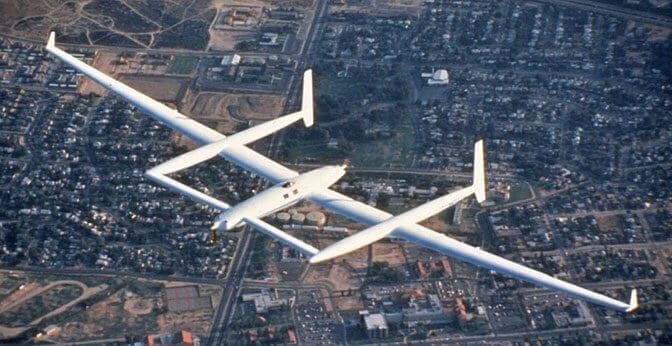If you have flown across an ocean, you will have an idea of how long the flight took. But what if you were to fly around the world? How long does it take to fly around the world?
Fastest flight around the world, along the equator:
It took 67 hours for a plane to fly non-stop around the world, along the circumference of the equator. This was a record flight around the world in 2005, by the Virginia Atlantic GloblFlyer plane.
Fastest flight around the world, along the North a South Poles:
It took 46.5 hours for a plane to fly along the North and South Poles. This was a record flight around the world in 2019, by an international crew, on a Gulfstream G650ER ultra-long-range jet. The plane landed three times during the trip to refuel.
Theoretical passenger plane non-stop flight around the world, along the equator:
It would take about 45 hours to fly around the world, along the equator, with a standard Boeing 747 passenger plane. This is just a theory as a passenger plane cannot hold enough fuel to last a trip around the world.
The length of the flight would vary based on the following factors:
- The type of plane and speed
- Route: Along the equator or North to South
- Number of stops
There have been many people who have flown solo around the world. The length of time traveling near the equator varies from that of traveling from the South Pole to the North Pole.
In this article, we will look at how long it takes for the following planes to fly around the world:
- Non-Stop, Non-Refueled Record Flights Around the World
- Passenger Planes
- F-86 Sabre
- Hypersonic Planes
Read on to learn more about how long it takes to fly around the world with different types of planes.
How Long Does It Take to Fly Around the World?
Flying around the world would be quite an adventure. That is, as long as you are well-prepared. Some people have flown the world non-stop at a relaxed pace to enjoy the view, whereas there have been others who have flown to break a speed record.
The earth has a circumference of 24,901 at the equator. So, let’s make this a basis in computing the hours that each plane flies around the world – without refueling.
Below are the amount of time it takes to fly around the world for different types of planes:
Non-Stop, Non-Refueled Record Flights Around the World
Rutan Model Aircraft 76 Voyager
In 1986, history was made when American pilots Jeana Yeager and Dick Rutan flew the first non-stop, non-refueled flight around the world. They left California’s Edwards Air Force Base and flew along the equator.
They flew an average of 116 miles per hour (187 km/h) and took 9 days, 3 minutes, and 44 seconds – without refueling. When they made it back, they only had 1.5% of fuel left in the tank. It was the first time an aircraft flew approximately 25,000 miles (40,000 km) around the world.

GlobalFlyer
Another historical non-stop, non-refueled flight around the world was in 2005 by the GlobalFlyer. The GlobalFlyer was flown by Steve Fossett and sponsored by Richard Branson. This single jet engine took 67 hours, or about 2.7 days, to fly around the world, with a speed of 342.2 miles per hour.
See the below video to learn more about GlobalFlyer and Steve Fosset’s record-breaking flight around the world:
Passenger Planes
Commercial passenger planes cannot fly around the world non-stop as they would run out of fuel. The longest current non-stop commercial flight is by Singapore Airlines, flying from Singapore to New York. This flight takes 19 hours.
But what if a commercial passenger plane, like a Boeing 747, could fly around the world non-stop, along the equator. The Boeing 747, with an average speed of about 565 miles per hour, can fly the circumference of the world, along the equator, in a straight line for about 44.07 hours. Based on the equator, the earth’s circumference is 24,901 miles. Thus, 24,901 miles divided by 565 miles per hour will give you 44.07 hours.
Most passenger planes have a speed of 500 to 700 miles per hour. Boeing’s top speed is 644 to 652 miles per hour (Boeing 787 or Boeing 777), depending on its variant.
The Cessna Citation X Plus can travel faster than the Boeing at 717 miles per hour. So, if this plane was able to hold enough fuel to travel around the world non-stop, it would make the trip in 34 hours and 73 minutes. (24,901 miles divided by 717 miles per hour).
F-86 Sabre
The D variant of the F-86 Sabre could fly around the world in around 35.67 hours if it could be refueled in the air. It travels faster than any of the previously mentioned aircraft, with a speed of 671 to 698 miles per hour. The F-86 Sabre, also called the Sabrejet, is a fighter jet that was used during the Korean War.
Variants of this plane have become parts of the military air defenses of various countries in the world. Additionally, they are used as private jets by individuals who can afford them. They are typically cramped, single-seat fighters, so flying non-stop around the world would be uncomfortable.
Hypersonic Planes
The amazing hypersonic planes could fly around the world in only 6.5 hours if they could hold enough fuel to fly non-stop, with a speed of 3,821 miles per hour. Their speed is five times more than the speed of sound; that’s why they are called hypersonic.
The first pilot to travel at hypersonic speed was Russian Yuri Gagarin in 1961, when he orbited the world for only 108 minutes at an incredible speed of 17,000 miles per hour / 27,400 kilometers per hour.
There are other types that registered longer travel time; nevertheless, the travel time is still phenomenal, as compared to passenger planes.
Presently, ongoing research is being conducted by the US, China, Russia, and other countries for their air defense strategies and weapons. The goal would be to create a hypersonic passenger plane that carries multiple passengers and can hold more fuel for longer-distance traveling. This would allow travelers to be on the other side of the world within minutes.
You also may find it interesting to know that a space shuttle, such as NASA’s space shuttler, Orbiter, or the International Space Station, would take only 90 minutes to fly around the earth, flying at 17,500 miles per hour. The International Space Station has been orbiting Earth since 1998. Flying at 17,500 miles per hour, around the planet every 90 minutes, is simply mind-blowing. (source)
Why It Takes Longer to Fly West than to Fly East?
Did you know that there’s a difference in travel time when you fly from the west to the east, and vice versa? It’s speedier to fly to the East from the West than it is to fly to the West from the East. This can be explained in the discussion below.
It takes longer to fly to the West than to fly to the East because of the atmospheric jet stream that blows from the West going to the East.
This atmospheric phenomenon is usually observed at higher altitudes when a plane flying to the West goes against the “flow” of the wind, slowing down its speed. On the other hand, the eastward flow of the jet stream will facilitate the speed of a plane flying to the East, as it follows the wind’s flow, which is to the East.
You can imagine this by placing a paper plane before an electric fan. When you throw the plane in the direction that the wind from the fan is blowing, it would fly quickly. But try flying it against the wind from the fan, and the paper plane would go the opposite direction. This is a crude example, but that’s how the jet stream affects the travel time of planes from way up there.
The jet stream is due to the earth’s rotation combined with the effect of the sun. There are warmer and colder places in the globe, relative to their positions from the sun. The North Pole is colder than the areas near the equator because when the earth rotates, it doesn’t expose much of the North Pole area to the sun.
This process creates warm air that rises above the atmosphere that can flow from North and South and back; in other words, the air flows counterclockwise. When the air nears the axis, it moves slower. At a distance from the axis, it moves faster in mid-altitude. This would result in the wind blowing from the West to the East.
How Long Would It Take to Fly Around the World Closer to the North Pole or South Pole?
In general, aircrafts flying closer or over the North Pole have a shorter route through Russia’s airspace going to the East (Southeast Asia and other Eastern countries). The travel time is shortened for about 2 hours, saving time and fuel costs.
During the Cold War, planes from the West were restricted from flying over the North Pole because of Russia. Conversely, at the end of the Cold War, planes were then allowed to fly over the Russian airspace in the North Pole.
Flying over the North Pole for long haul flights is preferred by some airlines over flying over the South Pole. With appropriate gear or necessary equipment for the cold weather and sufficient fuel, the air trip is smoother and more comfortable too.
There are no passenger planes that frequently fly over the South Pole as the Antarctic airspace and land don’t provide adequate emergency landing contingencies. Some chartered flights do fly over the South Pole for long flights, but these are rare.
A new record for North to South pole flight was set in July 2019. The flight, in a Gulfstream G650ER ultra-long-range jet, flew at an average speed of 535 mph (861 km/hr). It was completed in 46 hours, 39 minutes, and 38 seconds. (source)
Future Flights Around the World
Boeing’s Hypersonic Airline
Boeing Airlines has plans of using the hypersonic technology in more conventional airliners in the future to shorten travel time. This would mean traveling 5 times quicker than the speed of sound – that would roughly be 3,800 miles per hour.
Aside from those previously mentioned above, Boeing has plans too of producing a hypersonic aircraft that could take people from New York City to London in just 2 hours. This trip could take 8 hours via a conventional passenger plane. (source)
This is wonderful news for people who are conducting their business all around the globe. The technology would revolutionize the airline industry and expedite business transactions on a global scale.
However, the question is whether there are enough passengers who can afford the high cost of these flights and how Boeing could solve the issue of limited stops or destinations.
A similar British supersonic jet, the Concorde, was phased out in 2003. Three years later, after the tragic Air France Flight 4590 crash that killed all of its passengers and crews. The loud, booming sound of the aircraft was one reason why there were limited destinations, as people on the ground could not tolerate the deafening din.
Presently, this problem has been solved by aircraft scientists, however, as they have discovered a way to muffle the sound. Thus, that problem may have been solved; nonetheless, the expensive airfare could be another loophole. Would ordinary people be able to afford it?
Reportedly, Boeing’s plan of creating an impressive hypersonic airliner may not see fruition in the next 20 or 30 years from 2018. If Boeing succeeds in this grandiose plan, the plane would be the first hypersonic passenger airline that would fly the skies.

Elon Musk’s Airline Rockets
Elon Musk, the owner of Space X, plans to manufacture rocket planes to carry people to Mars in 2024. He plans to land cargo ships on Mars in 2022.
According to him, the same type of rocket technology would be adapted to fly people from “city to city on Earth” at the speed of 17,000 miles per hour (27,350 km per hour).
Musk, likewise, said that the cost would be the same as a full economy flight and that the travel time from one city to another would take less than 30 minutes and not more than an hour. (source)
If the plans of Boeing and Musk push through, it would be a gigantic development in the airline industry. The answer to the question: “How long does it take to fly around the world?” would change drastically from hours to a few minutes.
Related reading:
Avis Vs Budget Car Rental [What Are the Differences? Which is Better?]
How Long Does It Take to Drive Across Texas?
Is Vrbo Safe? Is Vrbo Legit? [Full Vrbo Vacation Rental Review]
How Long Does It Take to Go from California to Japan by Boat?

![How Long Does DayQuil Last? [How Long It Stays in Your System] how long does dayquil last](https://howchimp.com/wp-content/uploads/2021/06/how-long-does-dayquil-last-300x200.jpg)
![How Long Does DHL Take to Deliver? [DHL Delivery Time] How Long Does DHL Take to Deliver](https://howchimp.com/wp-content/uploads/2021/05/how-long-does-DHL-take-to-deliver-300x200.jpg)


